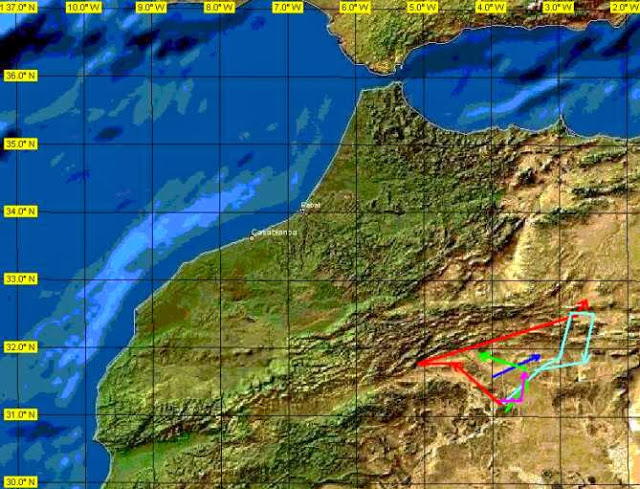A wild Houbara Bustard (Chlamydotis undulata) filmed “displaying” near Safia reserve, Bir Guendouz, Oued Dahab, about 50 Km north of the Mauritanian border by members of the Association ‘Nature Initiative’ (A.N.I.). The association regularly monitors the reintroduced wildlife (addax, dama gazelle and North African Ostrich) in this reserve, and this bird was recorded during one of these monitoring activities in the first week of December 2013.
Oued Dahab is one of the few regions that holds the latest truly wild populations of this endangered species. Other main areas for the wild birds are Lower Draa and Tarfaya (from the latitude of Guelmim to south-east of Khnifiss lagoon). Elsewhere, we are not 100% sure if we are watching a wild bird or a released one from the ‘reintroduction centres’ located in different regions (Missour, Errachidia…). I recall that some birders are not satisfied by their observations of the Houbara Bustards at/or near these places. However, wild birds are still present in the areas where the captive-reared birds are released. So in reality, a mix of both wild and released birds can be encountered at these areas.
Movements of tracked Houbara Bustards
Although the species is generally sedentary, some birds can sometimes move hundreds of kilometres from their usual home ranges. Here are some examples of such movements:
- Females from Merzouga and southern Boudnib plateau tracked in 1999 moved distances of 50 km to over 200 km from the breeding areas. During these movements, the tracked females visited new places and rarely returned to a previously visited area, although individual summer feeding grounds were often relatively small areas that were sometimes used for many months (see the map below).
- A male tracked from a research station located between Goulmima and Errachidia moved about 200 km eastwards to an area near Bouanane / plains of Tamlelt.

Note:
The location given above is of the Safia Acclimation Station of Saharan Wildlife and not of the actual location where the Houbara was filmed. This is because A.N.I. wants to hide this sensitive information from potential hunters/poachers for obvious reasons. This is just to be in the safer side, because to my knowledge no foreign hunters visit the area at the moment.